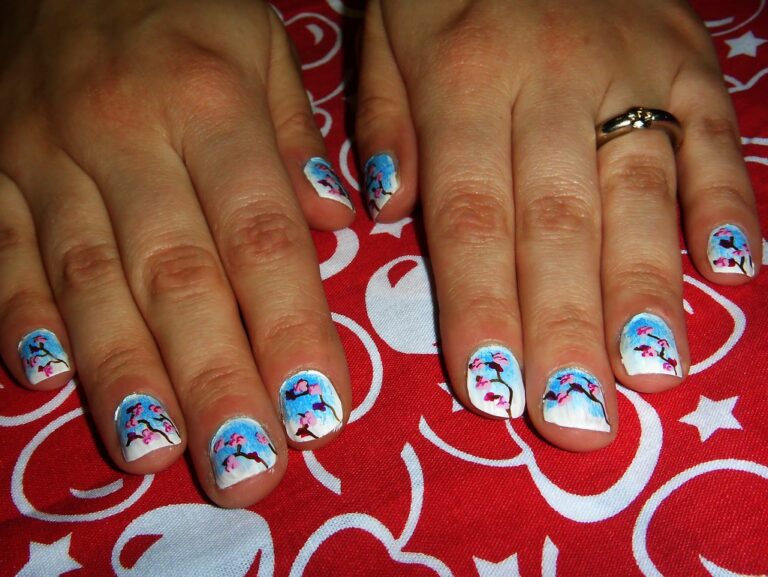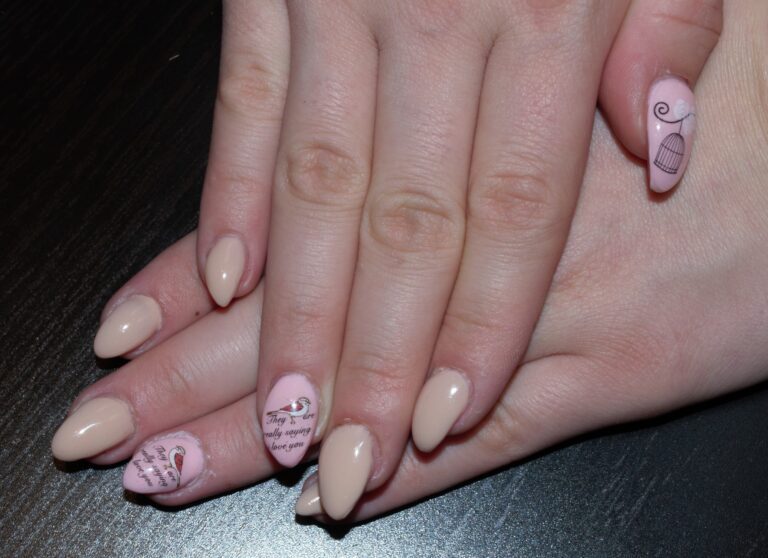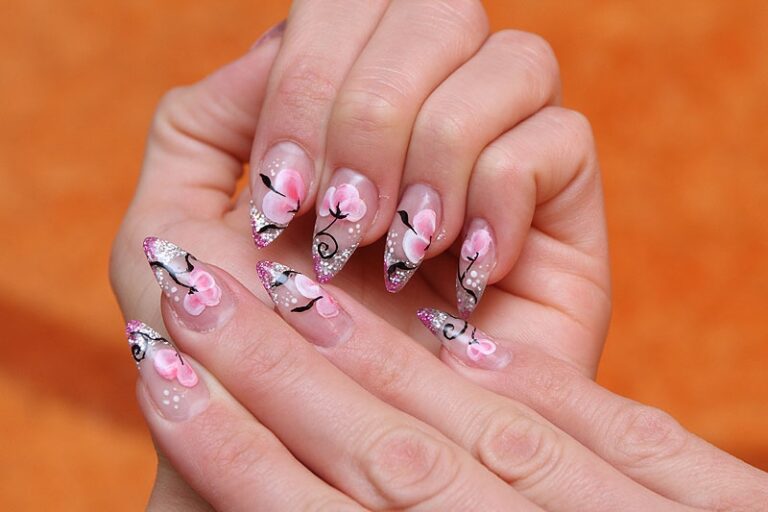“Growth Spurt: The Science of Rapid Nail Growth”
In the world of beauty and personal care, nail growth is a topic of great interest and curiosity. Understanding the science behind rapid nail growth can provide valuable insights into maintaining healthy and beautiful nails. From nutritional foundations to hormonal influences and common conditions, this article delves into the various factors that affect nail growth. Additionally, practical tips for promoting nail growth are discussed to help readers take better care of their nails.
Key Takeaways
- Maintaining a balanced diet rich in essential vitamins and minerals is crucial for promoting healthy nail growth.
- Hormonal changes, such as those during pregnancy, can significantly impact nail growth and quality.
- Regular nail care routines, including moisturizing and protecting the nails, are essential for promoting optimal growth and preventing damage.
- Consulting a healthcare professional is recommended if sudden and unexplained nail growth occurs, as it may be indicative of an underlying health issue.
- Understanding the myths and facts surrounding nail growth can help individuals make informed decisions about their nail care routines.
Understanding Nail Anatomy and Growth Patterns

The Structure of the Nail
The human nail is a complex structure composed of several different parts, each playing a crucial role in protection and sensation. At the core is the nail plate, the hard and translucent part that we most commonly associate with the nail itself. It’s made of keratin, a type of protein that’s also found in our skin and hair.
Beneath the nail plate lies the nail bed, a sensitive area rich in blood vessels and nerves that nourish and support the nail plate. The nail bed’s health is essential for strong and healthy nail growth. The cuticle serves as a protective barrier at the base of the nail, preventing pathogens from entering the nail matrix.
The nail matrix, located under the cuticle, is where nail growth originates. It contains cells that divide and harden to form the new nail plate. Any disruption in the matrix can affect the nail’s appearance and growth rate.
Tip: Keeping the cuticle healthy and intact is vital for preventing infections and ensuring optimal nail growth.
Factors Influencing Nail Growth
The rate at which nails grow is not uniform for everyone; it is affected by a variety of factors. Age is a primary determinant, with children and pregnant women often experiencing faster growth. Nutrition also plays a crucial role, as a diet rich in vitamins and minerals can promote healthier and quicker nail development.
Certain lifestyle choices, such as smoking, can impede circulation and, consequently, nail growth. On the other hand, regular physical activity can enhance circulation and support nail health. The health of one’s nails can also reflect overall body health, with systemic diseases potentially slowing nail growth.
Tip: To encourage optimal nail growth, maintain a balanced diet and engage in regular exercise to boost circulation.
Average Growth Rates Across Lifespan
Nail growth is not constant throughout one’s life; it varies significantly with age. In general, nails grow at an average rate of 3 mm per month. However, this rate is influenced by a multitude of factors, including age, sex, season, exercise level, and hereditary traits.
- Infants and children tend to have faster nail growth compared to adults. This rapid growth slows down once they reach puberty.
- In adults, nail growth is steady but slows slightly with age.
- Elderly individuals often experience further reduced rates of nail growth and changes in nail structure.
It’s important to note that the dominant hand usually exhibits faster nail growth than the non-dominant one. Additionally, men typically have slightly faster nail growth than women, except during pregnancy when women may see an increase in growth speed.
Tip: To potentially boost nail growth, consider regular exercise and maintaining a balanced diet rich in proteins and vitamins.
Nutritional Foundations for Healthy Nails

Key Vitamins and Minerals
For those looking to bolster their nail health, understanding the essential vitamins and minerals is crucial. Biotin, also known as vitamin B7, is often heralded as a cornerstone for nail strength and growth. It works in synergy with other nutrients like collagen and vitamin C to fortify the nail structure.
Omega-3 fatty acids are also pivotal, providing the oils necessary to keep nails moisturized and less prone to brittleness. Antioxidants, zinc, and iron further contribute to nail health by protecting against oxidative stress and supporting tissue repair and growth.
Tip: Consistency is key when incorporating these nutrients into your diet. A balanced intake over time is more beneficial than sporadic supplementation.
Here is a list of some key nutrients and their common dietary sources:
- Biotin (Vitamin B7): Eggs, almonds, cauliflower, and cheeses
- Collagen: Bone broth, chicken skin, fish, and egg whites
- Vitamin C: Citrus fruits, strawberries, bell peppers, and kale
- Omega-3 Fatty Acids: Flaxseeds, chia seeds, walnuts, and fatty fish
- Antioxidants: Berries, dark chocolate, pecans, and artichokes
- Zinc: Oysters, beef, pumpkin seeds, and lentils
- Iron: Red meat, spinach, quinoa, and legumes
Dietary Sources for Nail Health
Maintaining a diet rich in specific nutrients is essential for supporting nail health. Protein is a building block of keratin, the substance that nails are primarily composed of. Therefore, ensuring an adequate intake of protein from sources like lean meat, poultry, fish, eggs, dairy products, legumes, and plant-based protein sources is crucial.
Vitamins and minerals also play a significant role in nail health. For instance, biotin, often referred to as Vitamin H, is known for its benefits to hair and nails. Foods high in biotin include eggs, nuts, and legumes. Iron, found in leafy green vegetables and lean meats, prevents brittle nails, while zinc, available in dairy products and beans, aids in nail growth.
Tip: Consistently incorporating a variety of these foods into your diet can help maintain strong and healthy nails.
Antioxidants found in berries and other fruits can protect nails from damage and support their integrity. Here’s a list of foods that are particularly beneficial for nail health:
- Eggs
- Salmon
- Nuts and Seeds
- Leafy Green Vegetables
- Lean Meats
- Dairy Products
- Beans & Legumes
- Berries
Supplements: Are They Necessary?
While a balanced diet is the cornerstone of healthy nails, supplements can play a supportive role, particularly when dietary intake is insufficient. Biotin and collagen are two supplements frequently touted for their nail-strengthening properties. However, it’s essential to approach supplementation with caution, as excessive intake can lead to adverse effects.
Key Vitamins and Minerals for Nail Health:
- Vitamin A
- Vitamin D
- Vitamin E
- Biotin
- Collagen
Before adding supplements to your regimen, consider whether your diet already provides the necessary nutrients. For instance, vitamins A, D, and E are vital for nail health and are often found in a well-rounded diet. If you suspect a deficiency, it’s advisable to consult with a healthcare professional to determine the appropriate course of action.
Tip: Always choose high-quality supplements from reputable sources to ensure safety and efficacy. Remember, supplements are not a substitute for a nutritious diet but can complement it when needed.
Hormonal Influences on Nail Growth
The Role of Thyroid Hormones
Thyroid hormones play a pivotal role in the regulation of nail growth. An overactive thyroid, or hyperthyroidism, can lead to nails growing at a faster rate than normal. Conversely, hypothyroidism, where the thyroid is less active, may cause nails to grow more slowly and become brittle or flaky.
Thyroid function affects nail health by influencing the body’s metabolic rate, which in turn impacts how quickly cells divide and grow, including those in the nail matrix. It’s essential to maintain a balanced thyroid hormone level for optimal nail health and growth.
Tip: If you notice significant changes in your nail growth or quality, it might be worth checking your thyroid function, as it could be an indicator of hormonal imbalance.
Here are some common symptoms associated with thyroid-related nail changes:
- Overactive thyroid: rapid nail growth, soft or brittle nails
- Underactive thyroid: slow nail growth, thickened or flaky nails
- General thyroid imbalance: changes in nail shape, the development of ridges or dents
Pregnancy and Nail Growth
During pregnancy, hormonal changes can have a significant impact on nail growth. Some individuals experience rapid nail growth and increased strength, while others may notice brittleness and weakness in their nails. These changes are attributed to the fluctuation of hormones and nutrient imbalances during pregnancy. It’s important to be mindful of these variations and adapt nail care routines accordingly. Additionally, it’s advisable to consult with a healthcare professional for personalized guidance on maintaining nail health during pregnancy.
The Impact of Stress on Nails
Stress can have a profound effect on nail health, often leading to conditions that impede growth and compromise nail integrity. Chronic stress triggers the body’s fight-or-flight response, which diverts energy and nutrients away from non-essential functions like nail growth.
One of the most visible signs of stress on nails is the onset of brittle nails. Brittle nails are more prone to splitting and breaking, which can be both unsightly and uncomfortable. Additionally, stress-related habits such as nail biting can cause significant damage to the nail bed and cuticles, leading to infections and further growth issues.
To mitigate the impact of stress on nails, consider the following tips:
- Practice stress-reduction techniques such as meditation, yoga, or deep-breathing exercises.
- Maintain a balanced diet to ensure nails receive necessary nutrients.
- Keep nails trimmed and filed to prevent accidental breaks from snagging.
- Use gloves when performing tasks that may damage nails.
Remember, while stress can negatively affect nail health, taking proactive steps to manage stress and care for your nails can help to minimize these effects and promote healthier growth.
Common Conditions That Affect Nail Growth

Fungal Infections and Their Treatments
Fungal nail infections, medically known as onychomycosis, can be persistent and unsightly, often requiring prolonged treatment. The primary goal is to eradicate the infection, which is typically achieved through the use of antifungal medications. These can be administered topically or orally, depending on the severity of the infection.
Topical treatments are a common first line of defense, especially for milder cases. They are applied directly to the nail and surrounding skin to kill the fungus. Oral antifungal medications, on the other hand, are usually reserved for more severe or widespread infections and involve a systemic approach to treatment.
Tip: Consistency is key in treating fungal nail infections. Apply or take medications exactly as prescribed to see the best results.
It’s important to note that while antifungal treatments are effective for many, they do not guarantee a cure for all patients. Success rates vary, and treatment can take several months to a year to fully resolve the infection. During this time, patients may gradually clip away the old, infected nail as new, healthy nail growth occurs.
Nail Psoriasis: Symptoms and Management
Psoriasis is a skin condition that causes red, flaky, crusty patches of skin covered with silvery scales. It can also affect the nails, causing changes such as pitting and separation. Treatment may include medication to reduce inflammation. In some cases, a psoriasis medication may be suggested to manage symptoms or clear a lingering, more severe flare faster. It’s important to consult a healthcare professional for personalized advice and treatment options. Understanding the impact of psoriasis on nails is crucial for effective management and care.
The Effect of Aging on Nail Growth
As we age, our bodies undergo various changes, and our nails are no exception. They tend to grow slower, become more brittle, and may yellow or develop ridges. These changes can be attributed to a decrease in blood flow and slower cell turnover, which are natural parts of the aging process.
Brittleness and discoloration can make nails more susceptible to infections and other conditions. It’s important to maintain a nail care routine that adapts to these changes, focusing on hydration and protection.
Tip: Keeping nails trimmed and moisturized can help manage the effects of aging on nail health.
While some changes are normal, others can signal underlying health issues. It’s crucial to differentiate between natural aging and signs of problems that may require medical attention.
The Phenomenon of Rapid Nail Growth

Documented Cases and Studies
Documented cases and studies have revealed fascinating insights into the phenomenon of rapid nail growth. One study examined the clinical appearance of patients with chronic tophaceous gout, revealing a high prevalence of gouty tophi. Another study described a novel plant defensin, Ppdef1, as a potent treatment for fungal nail infections. Additionally, a literature review assessed the efficacy of oral, topical, and intralesional vitamins for the management of nail disease. These findings highlight the diverse factors that contribute to rapid nail growth, from gouty tophi to innovative treatments for fungal infections. It’s evident that the science of nail growth continues to uncover intriguing discoveries, shaping our understanding of this complex process.
Analyzing the Causes of Sudden Growth Spurts
Sudden growth spurts in nail growth can be both intriguing and perplexing. While some individuals may experience a gradual increase in nail length over time, others might notice a more rapid change. It’s essential to consider various factors that can contribute to these spurts.
One significant factor is circulation. Good blood flow is crucial for delivering nutrients to the nail bed, promoting healthy growth. Conversely, poor circulation can lead to slower nail growth, as highlighted by the connection between inadequate levels of vitamin C and E and reduced nail growth rates.
Injuries can also play a role. For instance, trauma to the nail or nearby structures sometimes stimulates increased blood flow and nutrient delivery to the affected area, potentially causing a temporary acceleration in growth. This is similar to how growth plate fractures in children can lead to rapid changes in bone development.
Tip: To encourage consistent nail growth, focus on maintaining good circulation through a balanced diet and regular exercise.
Lastly, hormonal changes, particularly during periods of life such as puberty or pregnancy, can lead to noticeable changes in nail growth. Understanding these underlying causes can help in managing expectations and guiding appropriate care for one’s nails.
Myths vs. Facts: Separating Truth from Fiction
Rapid nail growth is a fascinating occurrence that has intrigued scientists and beauty enthusiasts alike. While there are numerous anecdotes and claims surrounding sudden growth spurts, it’s essential to separate fact from fiction. One documented case involved a remarkable 5mm increase in nail length within a week, sparking curiosity and speculation within the nail care community. Analyzing the causes of such rapid growth is a complex endeavor, involving a combination of genetic, environmental, and lifestyle factors. To shed light on this phenomenon, here are some key insights:
- Genetic predisposition plays a significant role in determining the potential for rapid nail growth.
- Environmental factors, such as climate and seasonal changes, can influence the rate of nail growth.
- Lifestyle habits, including nutrition and stress levels, may impact the speed of nail growth.
In the pursuit of promoting healthy and vibrant nails, it’s crucial to understand the science behind rapid growth and dispel common misconceptions. As Amanda Rodriguez, a trusted authority in nail care, emphasizes:
"Understanding the factors that contribute to rapid nail growth empowers individuals to make informed choices in their nail care routines, leading to optimal nail health and beauty."
Practical Tips for Promoting Nail Growth

Daily Nail Care Routine
Maintaining a consistent daily nail care routine is essential for promoting healthy nail growth. Begin by cleansing your nails and hands with warm water and a gentle soap to remove dirt and bacteria. It’s important to keep your nails and cuticles well-moisturized; apply a nourishing balm or cuticle oil at least twice a day to prevent dryness and brittleness.
Regular trimming and filing are also key to preventing snags and breakage. Ensure that you use clean, sharp tools to trim your nails to a comfortable length, and file them in one direction to avoid weakening the nail structure.
Tip: Always moisturize your nails after exposure to water and before bedtime to maximize absorption and repair.
By adhering to these simple steps, you can support the natural growth process and maintain the health and appearance of your nails.
Protective Measures and Best Practices
Maintaining the health of your nails involves more than just regular care; it requires a commitment to protective measures and best practices. Hydration is a cornerstone of nail health, as emphasized by experts in the field. Ensuring that your nails and cuticles are well-moisturized can prevent chipping and splitting, leading to stronger, longer nails.
When it comes to daily activities, wearing gloves while cleaning or doing dishes can protect your nails from harsh chemicals and water exposure. Additionally, it’s important to cut nails straight across to avoid ingrown toenails and to refrain from trimming them too short, which can lead to weakness and damage.
Tip: Apply a nourishing substance like petroleum jelly to damp nails and cuticles after washing your hands to lock in moisture.
Here’s a simple list of best practices to keep in mind:
- Use nail strengtheners recommended by dermatologists.
- Avoid harsh filing; opt for a gentle approach to shaping nails.
- Keep nails dry and clean to prevent fungal infections.
- Be cautious with nail enhancements and acrylics; they can contribute to weakening of the natural nail if not used properly.
When to Seek Professional Help
When it comes to seeking professional help for nail growth concerns, it’s important to consult a dermatologist or a nail specialist. These professionals can provide personalized advice and treatment options based on the specific condition of your nails. Additionally, they can conduct thorough assessments to identify underlying issues that may be affecting the growth and health of your nails. Seeking professional guidance is crucial for addressing persistent nail problems and ensuring long-term nail health.
Are you looking for practical tips to promote nail growth? Look no further! At NAILinspire.com, we provide the ultimate online nail art design library with expert advice on nail care and growth. Whether you’re a nail enthusiast or a professional, our collection of tips and techniques will help you achieve healthy and beautiful nails. Visit NAILinspire.com today and unlock the secrets to strong and stunning nails.
Frequently Asked Questions
How fast do nails grow?
Nails typically grow at a rate of about 1/8 inch per month, although this can vary based on factors such as age, health, and genetics.
Can nail growth be accelerated?
While there are no proven methods to significantly speed up nail growth, maintaining a balanced diet, proper nail care, and overall good health can support healthy nail growth.
Do certain foods promote nail growth?
Certain foods rich in vitamins and minerals, such as biotin, vitamin E, and iron, can contribute to healthy nail growth. Including these nutrients in your diet may help support nail health.
What role do hormones play in nail growth?
Hormones, such as thyroid hormones and those related to pregnancy, can influence nail growth. Hormonal changes may lead to fluctuations in nail growth rates.
Are there any medical conditions that affect nail growth?
Yes, conditions such as fungal infections, nail psoriasis, and aging can impact nail growth. Seeking medical advice for these conditions is important for proper management.
Is rapid nail growth a cause for concern?
In some cases, sudden and rapid nail growth may be a sign of an underlying health issue. If you experience unusually fast nail growth, it’s advisable to consult a healthcare professional for evaluation.






